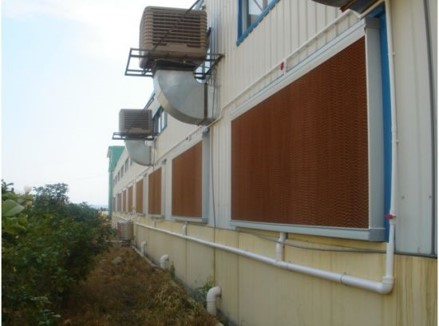Use of thermal storage to reduce the capacity of air conditioners
Electricity load leveling has become a social need to prevent global warming, etc. As an effective countermeasure in the civilian sector, heat storage air conditioning systems, which generate and store the heat needed for daytime heating and cooling the night before, have attracted attention and are being promoted.
The building structure thermal storage system is one of the new air conditioning systems, which uses cheap electricity at night to heat or cool the building structure, and then provides heating and cooling during the day. The combined use of external insulation and building structure thermal storage is a system that reduces the thermal load by insulating the entire building from the outside, and maximizes the thermal capacity of the building structure. By using outside air, natural energy can be stored in the building structure and used, which saves energy and improves the thermal environment inside the building at the same time. The building structure thermal storage system is a relatively new method of air conditioning equipment, and has the advantage of being able to reduce the capacity of the heat source equipment, as it can store heat by utilizing the large thermal capacity of the building structure.
The building structure is a general term for floor slabs, beams, columns, walls, etc. Floor slabs are mainly used as thermal storage bodies. In cooling thermal storage, the floor slab is cooled at night to store cold energy, and when the air conditioning is operated in the daytime, heat is exchanged between the warm indoor air and the floor slab, and the stored cold energy is extracted, reducing the amount of heat supplied to the air conditioning during the day. In heating thermal storage, the opposite method of adding heat is used. The advantage of a building structure thermal storage system compared to other thermal storage systems is that it does not require space to install a thermal storage body.
For example, structural thermal storage systems can be divided into three types depending on how they provide heat to the floor slab at night. One is to cool the ceiling of the floor below at night and store the cold energy in the floor slab, the other is to use the OA floor on the floor in question to cool the OA floor at night and store the cold energy in the floor slab, and the other is to embed hot and cold water pipes and ducts in the floor slab, cool it from within the slab, and store the cold energy. The key point is that by lowering the SHF*, there is no need to lower the temperature discharged from the air conditioner, and the cooling capacity of the air conditioner can be reduced.
*SHF is an abbreviation for Sensible Heat Factor, which means the ratio of sensible heat to total heat.



